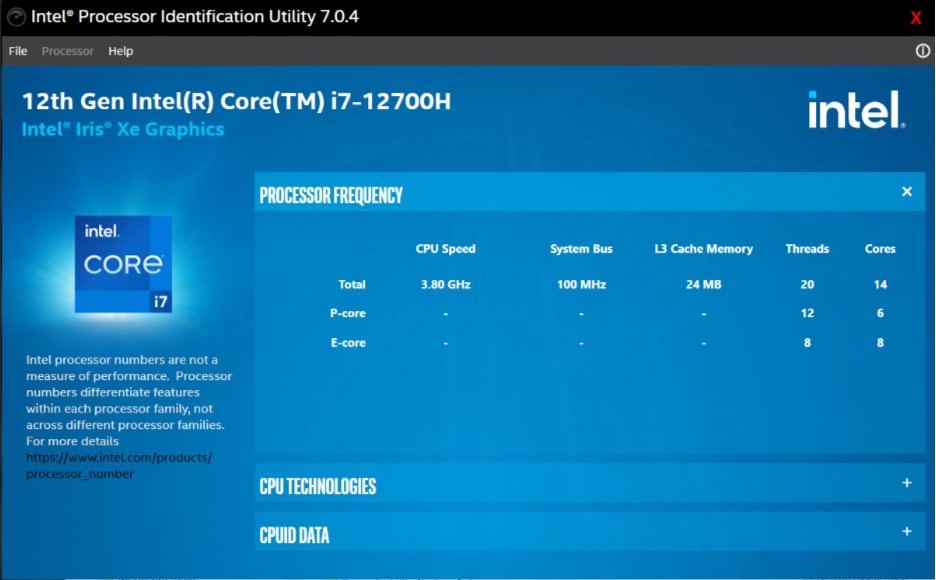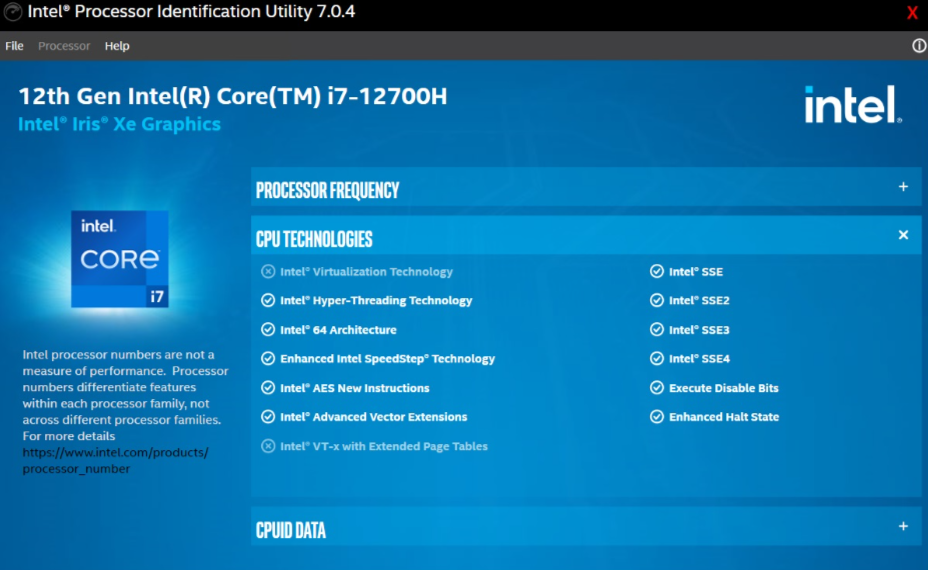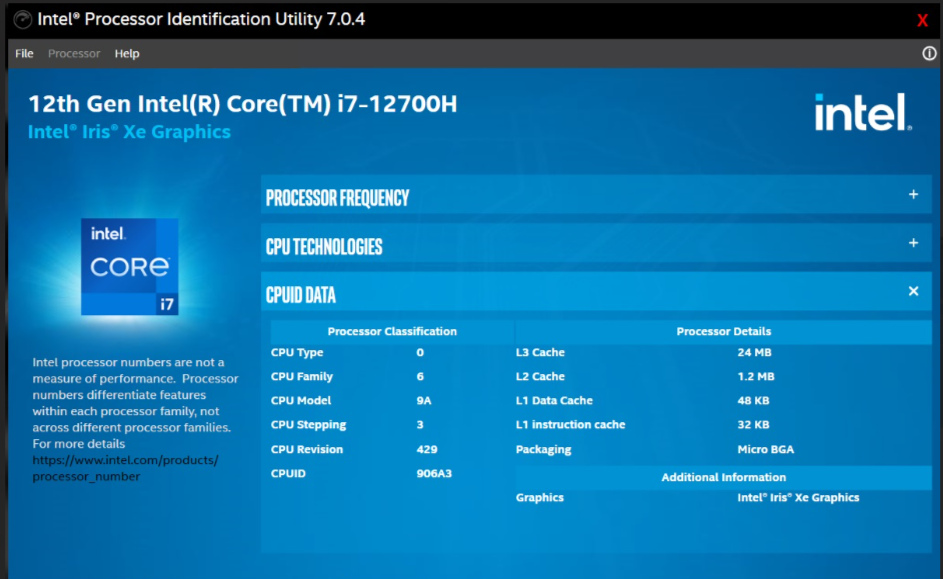 Download the Intel® Processor Identification Utility
Download the Intel® Processor Identification Utility
Intel® Processor Identification Utility has released a new and improved utility with enhanced features and a sleek, user-friendly interface.
| Note |
|
Intel® Processor Identification Utility for Windows* supports the latest Intel® Core™ Ultra Processors and Intel® Core™ Processors (7th Gen and newer).

For more information on which Intel processors have Performance Hybrid Architecture, visit What Is Performance Hybrid Architecture?
What is the Intel® Processor Identification Utility?
This application allows end users to obtain information about their Intel® Processor: Name, number, some technologies, and graphics supported. It is not supported on engineering samples (ES).
The application lets you check and save the processor information such as frequency, technologies, and CPUID data.
There are three sections: Processor Frequency, CPU Technologies, and CPUID.
PROCESSOR FREQUENCY Section
- CPU Speed
- System Bus
- L3 Cache Memory
- Threads
- Cores
The image below is an example from an older version of Intel® Processor Identification Utility.

CPU TECHNOLOGIES Section
Intel® Virtualization, Intel® Hyper-Threading, Intel® 64 architecture, Enhanced Intel SpeedStep®, Intel® AES New Instructions, Intel® Advanced Vector Extensions, Intel® Internet Streaming SIMD Extensions (SSE), Execute Disable Bit, and Enhanced halt state Technologies.
If Intel® Virtualization is not checked in this application, and it shows as enabled in the Task Manager, then the Intel® Virtualization is used by some other software on the machine. Refer to the table in Does My Processor Support Intel® Virtualization Technology? for more information.
The image below is an example from an older version of Intel® Processor Identification Utility.

CPUID DATA Section
- Processor Type, Family, Model, Stepping Revision, and CPUID
- Cache information
- Graphics controller name
For more information, refer to CPUID Information for Intel® Processor Identification Utility.
The image below is an example from an older version of Intel® Processor Identification Utility.

How to save information of the processor using this application
Under File, click Save, choose a folder, and click OK.
The text file will be stored in the folder you have chosen.
Is there any Linux* version of the Intel® Processor Identification Utility?
No, there's no Linux* version for this application.
What are the supported Windows* operating system (OS) versions?
Refer to Supported Operating Systems for the Intel® Processor Identification Utility.
What are the supported Intel® Processors for Intel® Processor Identification Utility?
Visit the Intel® Processor Identification Utility - Windows* Version on the download center and look up the list of Intel® Processors supported by this application.